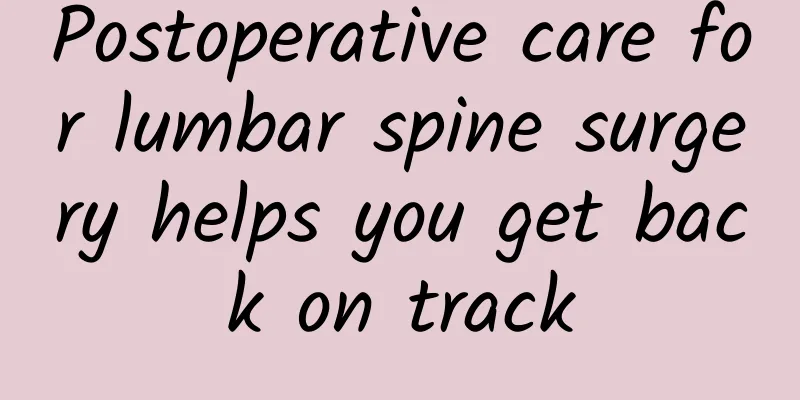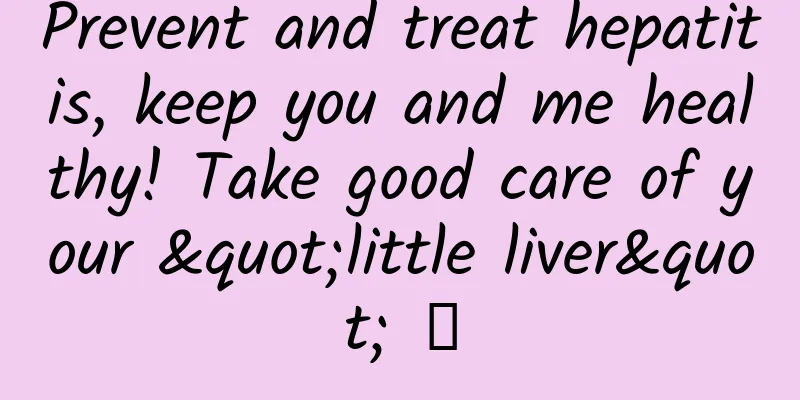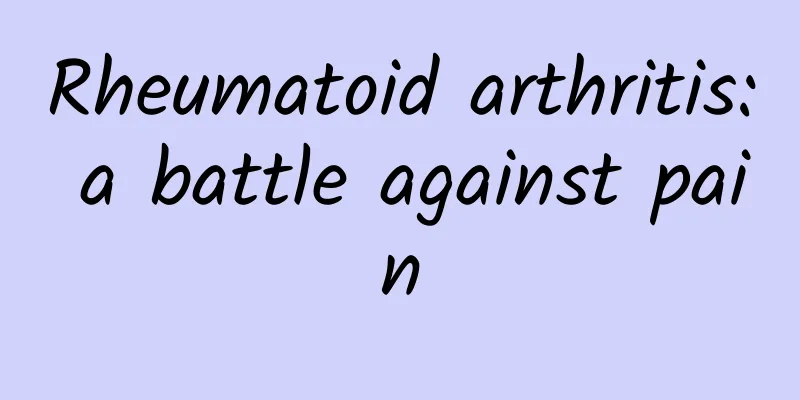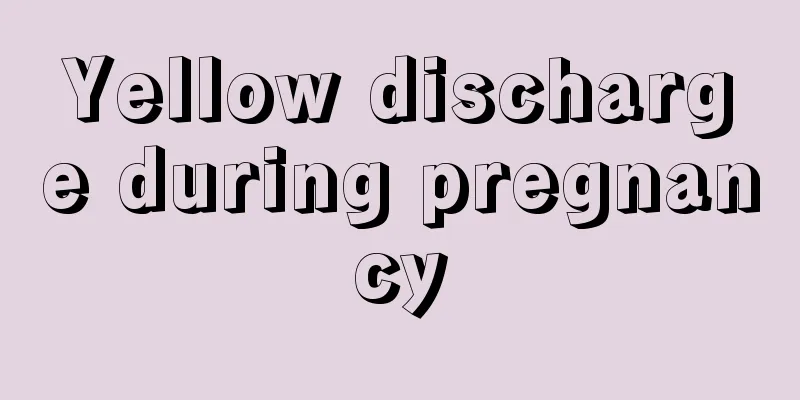How can patients with rhinitis save themselves during the transition from autumn to winter?
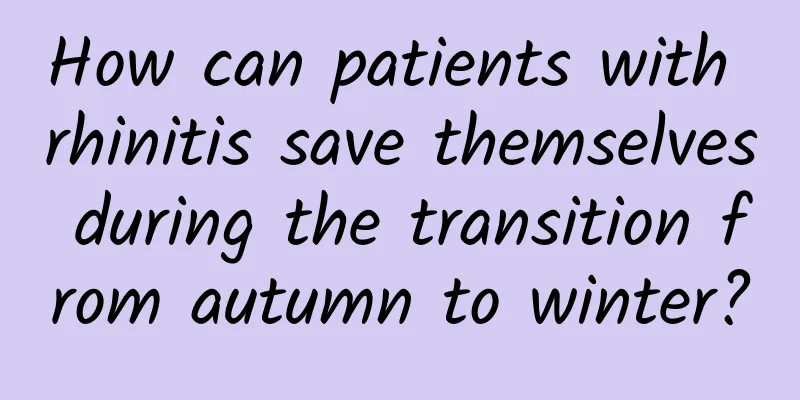
|
I believe that there are always a few people with rhinitis around you. When you go to work or class in the morning, you can always hear the sound of people blowing their noses. When you turn around, you will see that the other person's nose has been poked red, his mouth is slightly open, and he sighs deeply. In fact, for patients with rhinitis, this is just something they experience every day, especially during the transition from autumn to winter. Rhinitis often occurs when the seasons change, when you stay in an air-conditioned room for a long time, or when you catch a cold... Rhinitis is often caused by a cold. Some pollen-like irritants directly stimulate the nasal cavity, so it is not surprising that the struggle between good and evil in the nose is aroused. What we often call rhinitis refers to inflammatory diseases of the nasal cavity, which is an inflammation of the nasal mucosa caused by viruses, bacteria, allergens, various physical and chemical factors, and certain systemic diseases. It can be divided into allergic rhinitis and allergic rhinitis. Allergic rhinitis is a non-infectious chronic inflammation of the nasal mucosa after contact with dust mites, pollen, etc., and is manifested by sneezing, nasal congestion, etc. Allergic rhinitis, also known as allergic rhinitis, is one of the common diseases in the Department of Otolaryngology. According to data from the World Health Organization (WHO), there are nearly 600 million patients with allergic rhinitis worldwide. The main symptoms of rhinitis are: nasal congestion, excessive mucus, decreased or lost sense of smell, headache, dizziness, loss of appetite, fatigue, memory loss and insomnia. Chronic rhinitis can cause long-term intermittent or alternating nasal congestion, leading to dizziness and headache. In the first 1 to 2 days of acute rhinitis, patients will experience dryness in the cavity and nasopharynx, frequent sneezing, etc. During the acute phase from the 2nd to 5th day, vomiting, diarrhea, coma and even convulsions will often occur. If you blow your nose incorrectly, these bacteria and viruses will go to places they shouldn’t go! On the other hand, incorrect nose blowing posture may cause otitis media, nosebleeds and sinusitis. The correct way is to place toilet paper or handkerchief in front of both nostrils; press one nostril, exhale with a little force to wipe out the snot; then use the same method to clean the nostril on the side that was just pressed. If I don't blow my nose, can't I just suck it? Of course not. There may be viruses, dust, etc. in the snot, and our goal is to expel them from the body; in addition, if you inhale the mucus, it may enter the trachea by mistake, and even cause suffocation, which is very dangerous. How can patients with rhinitis save themselves? You can pay attention to whether you have been exposed to indoor and outdoor allergens, keep the air circulating indoors, pay attention to temperature changes, and always keep your nose warm. There are some nasal irrigation products on the market that claim to be good news for rhinitis patients. But are they really effective? Will the nasal cavity become more serious the more it is rinsed? Dongdongmiao also wants to say this: as long as the method is used correctly, there is no danger in washing your nose. Nasal irrigation can wash away irritants and allergens such as dry scabs, pollen, and dandruff attached to the nasal mucosa, which is conducive to other nasal medications to better act on the nasal mucosa and diffuse, thereby improving the overall treatment effect. However, it should be noted that people with acute nasal infection and bone defects in the skull base and orbital wall and patients with severe anterior deviation of the nasal septum cannot undergo nasal irrigation. As for the frequency of flushing, it is generally 1 to 2 times a day. For patients with allergic rhinitis, flushing can be performed after contact with allergens. There are special nasal washers in major hospitals or regular pharmacies, which can be used according to the instructions. Produced by: Dongdongmeow Public account: Dongdongmeow Science (ID: dongdongmeow) Video account: Dongdongmiao; Weibo: @Dongdongmiao Science First published: Science Popularization China Science Popularization Account "Dongdong Miao" |
<<: What should not be eaten with straw mushrooms (it will cause adverse reactions with quail meat)
Recommend
What does color Doppler ultrasound of the heart check during pregnancy
For women, pregnancy is a normal physiological ph...
Breast enhancement methods
Nowadays, many modern women have higher and highe...
What tests should be done during the 12th week of pregnancy
It is said that the three months of preparation f...
Symptoms of high prostaglandins in women
We use the human body every day, but do you reall...
Will Caesarean section cause looseness?
For women, vaginal relaxation will affect the nor...
Can pregnant women sleep on a new mattress?
The sleeping condition of pregnant women is the m...
46 days of pregnancy with gestational sac but no embryo
What causes the termination of growth and develop...
Diabetic patients should pay more attention to their feet!
Author: Cui Lei, Chief Physician, Beijing Century...
Can I eat scallops during menstruation?
We all know that for women, menstruation is a ver...
Women always feel that their urine is not clean
Some women have the symptom of not being able to ...
Can I still eat ginkgo after abortion?
Abortion will more or less cause varying degrees ...
The difference between primer and BB cream, a must-read for women who love beauty!
Primer and BB cream are both commonly used items ...
What was the battle that laid the foundation for the Three Kingdoms? When did the Kingdom of Shu fall in the Romance of the Three Kingdoms?
There are more than a thousand characters with na...
How to use powder to help you create a perfect makeup
Pressed powder is a must-have item for women when...


